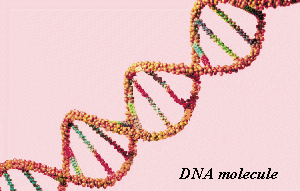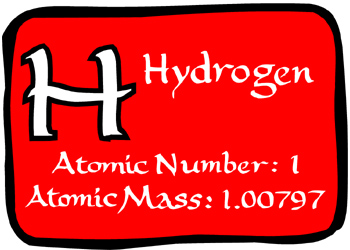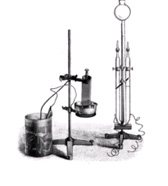 In a molecule, two or more
atoms share electrons through a chemical bond and are
electrically stable. The term “molecule” is French for an extremely small participle and was
introduced by the French philosopher Rene Descartes in the 1620’s. Even
two atoms of the same element can be a molecule. Oxygen is a
diatomic molecule, which is made of two atoms of oxygen (O2). In a molecule, two or more
atoms share electrons through a chemical bond and are
electrically stable. The term “molecule” is French for an extremely small participle and was
introduced by the French philosopher Rene Descartes in the 1620’s. Even
two atoms of the same element can be a molecule. Oxygen is a
diatomic molecule, which is made of two atoms of oxygen (O2).
 Other diatomic molecules include hydrogen, sodium, chlorine, bromine, and
iodine. Molecules are very small ranging in size from two atoms to
macromolecules like DNA composed of billions of atoms. Molecules
can be created inorganically (without life) or
organically (with life). Other diatomic molecules include hydrogen, sodium, chlorine, bromine, and
iodine. Molecules are very small ranging in size from two atoms to
macromolecules like DNA composed of billions of atoms. Molecules
can be created inorganically (without life) or
organically (with life).
 Compounds
are two or more different elements that are joined chemically together.
Compounds are everywhere. It is the chemical substances that you see,
feel, taste, and even eat everyday. We are made of compounds, the Earth
is made of compounds, and even the components of space are made of
compounds. Compounds
are two or more different elements that are joined chemically together.
Compounds are everywhere. It is the chemical substances that you see,
feel, taste, and even eat everyday. We are made of compounds, the Earth
is made of compounds, and even the components of space are made of
compounds.
 Elements are
present in compounds as fixed amounts parts by mass. The formed
molecule would have a fixed number of atoms. The property of a
compound is different from those of the elements that make it up.
Water, a liquid is made up of two gases, hydrogen and oxygen. Compounds
can be broken into its component elements through various methods.
Through electrolysis water (H2O) can be chemically
forced into making oxygen and hydrogen. There will be twice the volume
of hydrogen as there is oxygen. Elements are
present in compounds as fixed amounts parts by mass. The formed
molecule would have a fixed number of atoms. The property of a
compound is different from those of the elements that make it up.
Water, a liquid is made up of two gases, hydrogen and oxygen. Compounds
can be broken into its component elements through various methods.
Through electrolysis water (H2O) can be chemically
forced into making oxygen and hydrogen. There will be twice the volume
of hydrogen as there is oxygen.
|